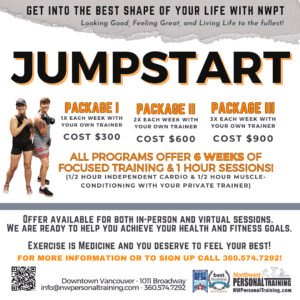It is well documented that regular exercise improves your overall health. If you take the time to strengthen your cardiovascular and musculoskeletal fitness, it will pay dividends in terms of your quality of life now and in the future and may increase your life span.
Don’t forget to sign up under “Weekly Fitness Tips” to automatically receive my latest blog post in your inbox!
Here is a list of simple tests that you can perform to measure and monitor your health and fitness:
Rockport Mile Walk
Walk for 1 mile either on a track or treadmill. Record your heart rate at completion and the time it took you to complete. Go to this website , you can determine your rating. People who can walk fast enjoy a 53 percent reduction in all-cause mortality.
2000 Meter Row Test
Row for 2000 meters on an indoor rowing machine. Record the time it took you to complete the test. Go to this website to determine your rating.
 Distance Run Test
Distance Run Test
This test allows you submit any distance run to calculate your cardiovascular fitness based on your time. Go to this website to compare your results to norms based on age and gender.
Pushup Test
Start by warming up.
Then perform as many military style pushups (from toes) as you can.
Studies indicate that men who can perform 40 or more pushups are 96 percent less likely to experience a cardiovascular episode than those who could do only 10 or fewer. For women, the goal is 20 pushups. If you can only do 10 pushups (or 5 for women), or fewer, your risk of heart disease is over 30 times greater than those who could hit the mark.
Stand/Sit/Stand Test
How well you can transition from standing, to sitting, and back to standing position indicates whether you’re at greater risk of dying.
Start by warming up.
Stand barefoot on a non-slippery floor with plenty of space around you.
Cross one leg over the other and lower yourself down to a sitting position. Then try to stand back up.
Here’s how the scoring works. Start with 10 points and subtract half a point for each time you use your hand, knee, or forearm or lose your balance.
People who scored less than 8 points were two times as likely to die within the following six years compared to those who scored higher. People who scored 3 or less points were more than five times as likely to die.
The goal is to do the test without needing to touch the floor with your hands, knees, elbows, forearms, or the sides of your legs. Improving your score decreases your mortality rate. This test measures flexibility, balance, and muscular strength. If you are tight, have poor balance, are overweight and/or lack muscular strength, the test is harder and may indicate a higher risk of mortality.
Balance Test
This is a gentler test than the Stand/Sit test above and may be more appropriate for an older and/or deconditioned individual.
Lift one foot 12 inches off the ground. Keep your arms at your side and gaze straight ahead. Count the seconds you’re able to hold this position while keeping your arms at your side and without lowering the foot to the ground.
Adults who cannot hold their balance in this position for 10 seconds, have an 84% greater risk of death than those who can.
If you would like to improve your score in any of these tests, commit to a program that includes weekly cardiovascular exercise, muscle conditioning, balance, and flexibility.
Perform these tests as appropriate every 4-8 weeks. As your scores improve, this is an indication that you are improving your overall health and fitness and increasing your longevity.
Yours in health & fitness,
Sherri McMillan


